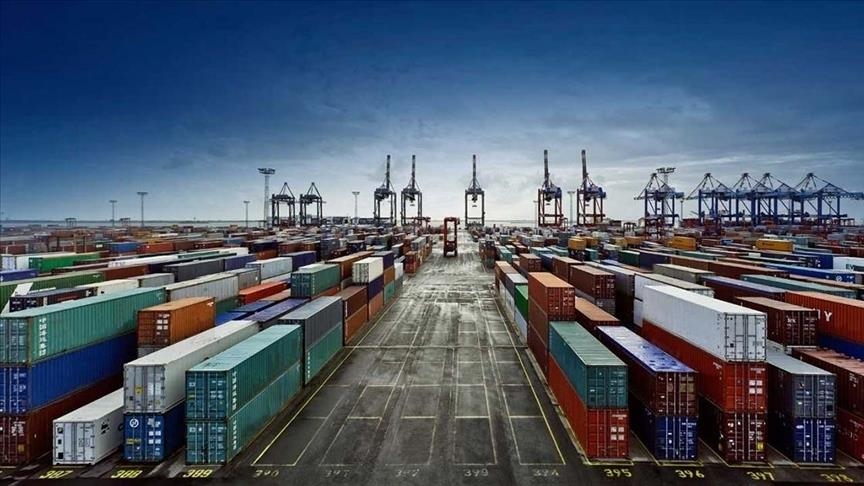EU-US trade may stagnate due to tariff war
Mutual trade may be rendered impossible if talks fail and US imposes tariffs of 30% or over

BRUSSELS
The trade between the US and the EU may come to a standstill with Washington’s tariffs coming into force on Aug. 1, if a deal isn’t reached.
The EU and the US have the world’s largest bilateral trade, over 1.5 trillion euros ($1.7 trillion), while the two have been each other’s largest trading partners in goods, services, and investments, according to data from the EU Commission.
The EU’s exports of goods to the US totaled $623.7 billion last year, while the US’ goods exports to the EU reached $392.9 billion, revealing a trade surplus of $231.5 billion.
In 2023, the EU bought services worth $501.3 billion from the US, while its service exports to the country totaled $373.9 billion, showing a US-favored trade surplus of $127.4 billion.
US President Donald Trump is particularly concerned about the EU’s surplus in trade in goods, while the EU points out the US’ surplus in services, which results in setbacks in negotiations.
The mutual direct investments between the US and the EU stand at $2.7 trillion.
Trump imposed various tariffs on the EU alongside the US’ other trade partners, starting with the steel and aluminum tariffs of 25% that came into force in March 2025, followed by an auto tariff of 25% — the EU is a leader in the automotive sector.
Sweeping reciprocal tariffs
Washington’s next move came in the form of sweeping reciprocal tariffs. Trump set a high rate of 20% for the EU.
The EU repeatedly asked to negotiate, but the US left these calls unanswered for a while. After the US-China tensions escalated, Trump suspended his reciprocal tariffs for 90 days — which included the EU, as the bloc had not reciprocated — reducing the rate to the baseline 10% on the EU.
However, Trump later said the trade talks with the EU did not yield fruit, proposing to impose a 50% tariff on the bloc starting June 1. EU Commission President Ursula von der Leyen and Trump had a phone call after. The US postponed the 50% tariff decision until July 9 as a result.
Trump later extended this tariff postponement from July 9 to Aug. 1 to create space for negotiations, while announcing that the US would impose a 30% tariff on the EU for the time frame.
At this stage, the EU Commission and US officials are holding intensive talks to resolve this issue.
The EU took a very soft approach to the developments, especially to Trump’s harsh rhetoric. EU officials believe trade issues should be resolved via constructive dialogue, but they also said they would respond if needed.
EU officials are bracing for all scenarios, while noting the negotiations have to result in mutually beneficial agreements.
EU's retaliatory measures
The EU is prepared to retaliate against the steel and aluminum tariffs if need be. The bloc prepared a package including a list of products worth $24.7 billion — the measure has yet to be implemented during ongoing talks.
The EU prepared a list of retaliatory measures worth $84.6 billion in response to the US’ 20% auto tariff on the bloc. The list includes Boeing aircraft, machinery, automobiles, and whiskey, among other things.
The list is being updated with the anticipation that the US will raise its tariff to 30%.
EU countries are also discussing various measures, including export controls, EU market access restrictions, and terminating public tender participations. These measures go beyond mere customs duties.
The EU sees it that the failure to reach an agreement on tariffs and the US imposing 30% or more tariffs would render mutual trade practically impossible, so the EU side seeks to maintain uninterrupted trade relations with the US, at least with a 10% tariff level.
Anadolu Agency website contains only a portion of the news stories offered to subscribers in the AA News Broadcasting System (HAS), and in summarized form. Please contact us for subscription options.







